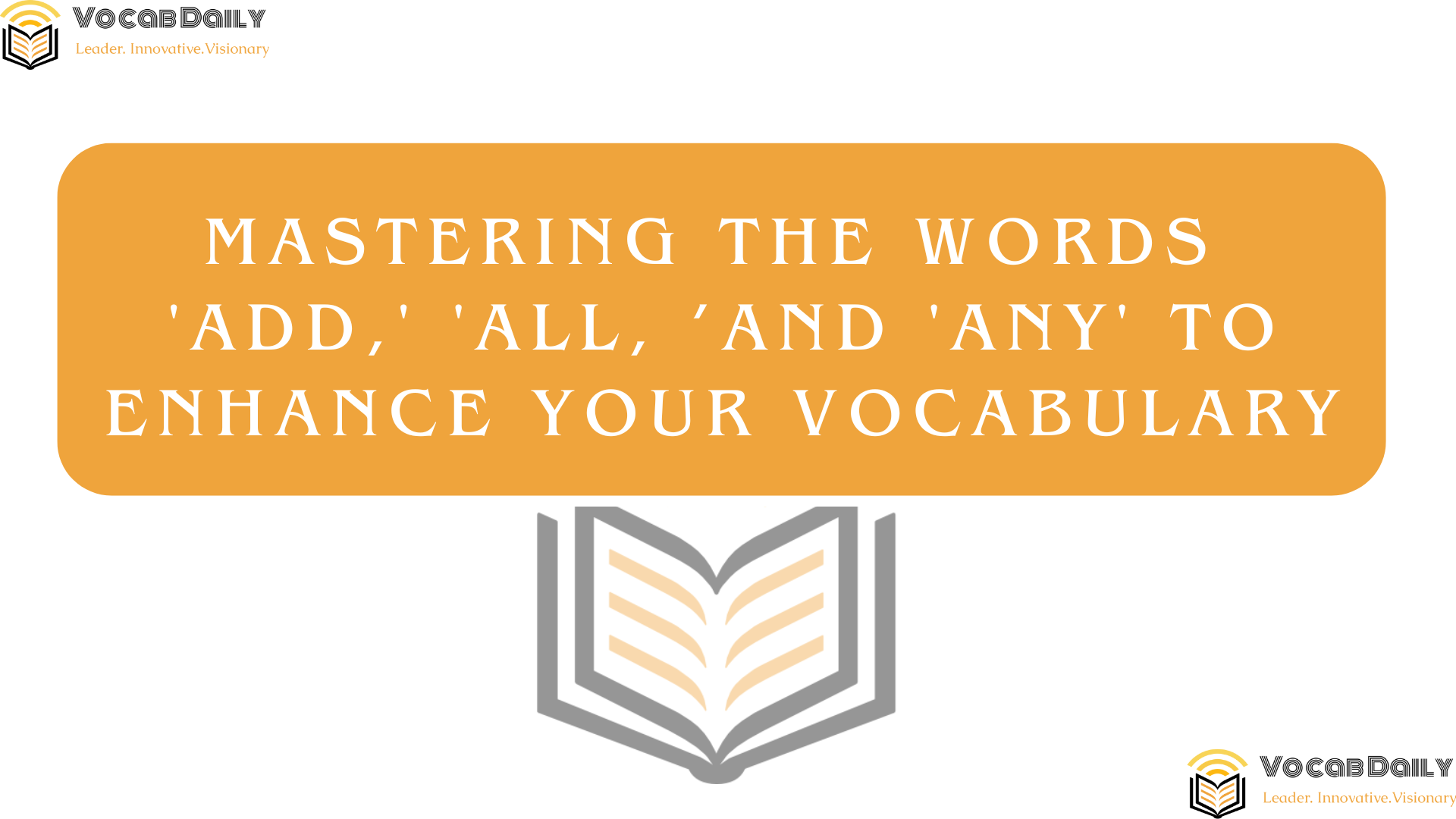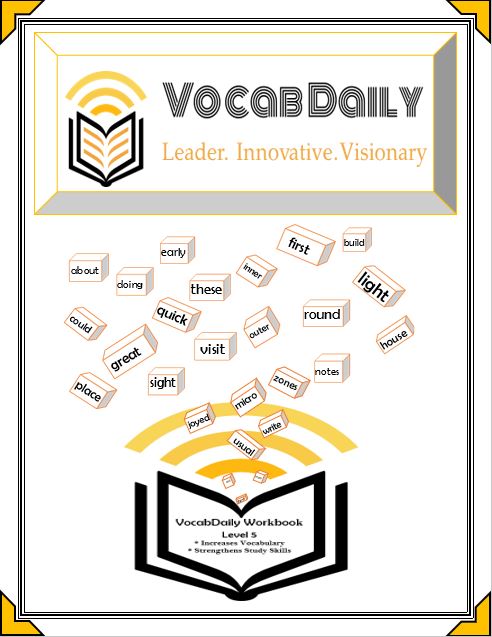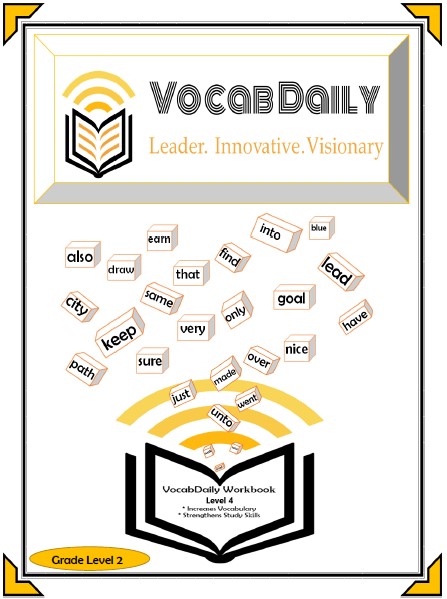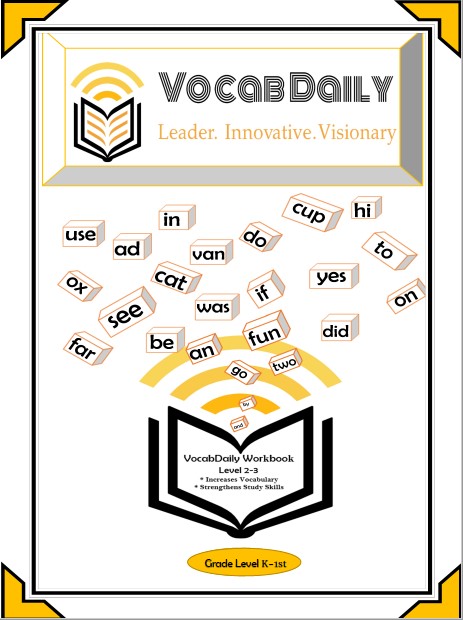Words like add, all, and, and any may seem simple, but they are integral to effective communication. These words serve as building blocks in both spoken and written English, helping to form clear, cohesive, and impactful sentences. Understanding how to use these words effectively will improve your fluency, making your communication more natural and sophisticated. Whether you’re trying to convey totality, connect ideas, or add more detail to a conversation, mastering these four words is essential to refining your language skills. In this article, we will explore the various uses of add, all, and, and any, providing real-life examples and expert insights on how to use them correctly and confidently. By the end of this article, you will have a deeper understanding of how to incorporate these words into your vocabulary, enabling you to communicate with greater precision and clarity.
Understanding the Word “Add”
The verb add is a versatile word that is used to describe the act of combining or increasing something. In its most basic form, it refers to including something to make a total amount larger or more complete. Its function is not limited to simple arithmetic or physical additions—it extends to abstract concepts, as well. For example, when you “add” a new piece of information to a conversation, you’re not physically combining objects but instead contributing to a broader understanding or point.
This flexibility makes add one of the most commonly used verbs in English. It can describe actions ranging from adding ingredients to a recipe to adding a task to a to-do list, or even “adding” emotional or intellectual value in discussions.
Examples:
- “Can you add salt to the recipe?”
- “I need to add more information to my report.”
- “She decided to add her thoughts during the meeting.”
Beyond its straightforward meaning, add also appears in a range of collocations that make it more flexible and nuanced. Phrases like “add to the conversation” and “add value” are especially common in business and academic settings, where the word carries the idea of enriching or enhancing something, whether it’s an idea, product, or group dynamic.
Moreover, in its advanced forms, add can be seen in adverbs or adjectives like “additionally” or “added,” which allow the speaker to introduce new elements to their argument, report, or presentation.
Examples of advanced usage:
- “The company plans to add more features to the app next year.”
- “He will speak additionally about the upcoming changes during the conference.”
Mastering the word add and its related expressions is key for effective communication, especially in academic, professional, and casual settings. It helps convey not only the concept of inclusion but also the idea of improvement and expansion.
Exploring the Word “All”
The word all is a determiner used to express totality or inclusivity. It is used when referring to the entirety of a group or category, making it essential for clearly stating that nothing is excluded. All can be used with countable and uncountable nouns and is a useful word for showing completeness or emphasizing the amount of something.
In its simplest form, all can be used to describe everything within a particular group or set. For example, “All the children are playing outside” means that every single child is involved in the activity, with no exceptions.
Examples:
- “He worked all day to finish his project.”
- “We should invite all of our friends to the wedding.”
However, all is not only used in positive statements. It can also function in negative contexts to emphasize the absence or exclusion of something. For instance, “Not all of them passed the test” indicates that only some members of a group succeeded.
Moreover, all can be combined with other words or phrases to create a more complex meaning, such as “all of” (e.g., “All of the books were sold”) or “all about” (e.g., “I know all about his plans”).
In more advanced usage, all is also often combined with adjectives to express total qualities or inclusivity. For example, “all-encompassing,” “all-inclusive,” and “all the time” are frequently used in both written and spoken language to provide emphasis or a more specific idea of completeness.
Examples of advanced usage:
- “She is an all-encompassing leader, able to unite the team.”
- “This is an all-inclusive resort, offering everything you need in one place.”
Mastering all and its variations allows you to express totality in ways that are precise and sophisticated, making it a crucial word in both casual and formal contexts.
Connecting Ideas with “And”
The word and is a coordinating conjunction used to connect words, phrases, or clauses within a sentence. It is one of the most commonly used conjunctions in English and serves to join similar elements together. Its main function is to add information, show similarity, or indicate that two things occur simultaneously.
In its most basic form, and links two nouns or objects that are related or grouped together. For example, “I like tea and coffee” connects two related items. Similarly, it can join two verbs to show actions that are being carried out together, such as in “She runs and swims every morning.”
Examples:
- “He went to the store and bought some milk.”
- “I enjoy hiking and camping on the weekends.”
However, and does not only connect simple nouns or verbs—it is also crucial for building more complex sentences. It links independent clauses and allows the speaker or writer to present ideas that are equally important. For example: “He is both hardworking and reliable.”
Advanced usage:
- “She was tired and so she went to bed early.”
- “The team is skilled and experienced in handling challenging tasks.”
The versatility of and extends beyond its basic usage, making it a key word for crafting fluent and coherent sentences, especially when joining ideas or expanding on concepts.
The Versatility of “Any”
The word any is a determiner that refers to an unspecified quantity or selection of something. It is most commonly used in questions, negative statements, and conditional expressions. The flexibility of any allows it to be used in a variety of contexts, depending on the nature of the sentence.
In questions, any is used to inquire about the availability or presence of something, often when the speaker is not specifying a particular amount or type. For example: “Do you have any apples?” In this case, the speaker is asking if apples are available, without any specific expectations regarding quantity.
Examples:
- “Do you have any suggestions for dinner?”
- “Have you seen any movies lately?”
In negative contexts, any is often used to emphasize the absence of something, as in “I don’t have any money.” This implies a complete lack of money, with no exceptions or alternatives.
Advanced usage:
- “If you have any questions, feel free to ask.”
- “Is there any way we can improve this plan?”
The word any can also be used as a pronoun, referring to an unspecified person or thing, such as in “Any of these books will do” or “Any student can participate.”
Using any effectively allows you to express uncertainty, openness, or conditionality, which is particularly useful in everyday conversation and when making polite requests or offers.
Related Vocabulary and Collocations
To further enhance your understanding of add, all, and, and any, it’s helpful to look at some related words and phrases. These collocations are often used together with the main word, making them more natural in speech and writing.
- For “add”:
- “Add value” (e.g., “The new feature will add value to the product.”)
- “Add to the list” (e.g., “Please add John’s name to the guest list.”)
- “Additional” (e.g., “He provided additional information during the meeting.”)
- For “all”:
- “All of” (e.g., “We have all of the supplies we need.”)
- “All about” (e.g., “She is very knowledgeable all about the project.”)
- “All the time” (e.g., “I go to the gym all the time.”)
- For “and”:
- “And also” (e.g., “She speaks Spanish and also French.”)
- “And then” (e.g., “I went to the store and then I met my friend.”)
- “And so” (e.g., “He was tired, and so he went to bed early.”)
- For “any”:
- “Anytime” (e.g., “You can call me anytime.”)
- “Anything” (e.g., “Is there anything I can help you with?”)
- “Anyone” (e.g., “Has anyone seen my keys?”)
Conclusion
Mastering the words add, all, and, and any is a key step toward improving your vocabulary and communication skills. These words are integral to structuring ideas, creating clarity, and expressing inclusivity, totality, and flexibility in speech and writing. By practicing these words in various contexts, you can enhance your fluency and express your ideas more effectively. For continued learning, visit VocabDaily’s website and explore additional resources to build a stronger vocabulary foundation.
Visit VocabDaily and Explore workbooks here to continue enhancing your vocabulary!




Leave a Reply